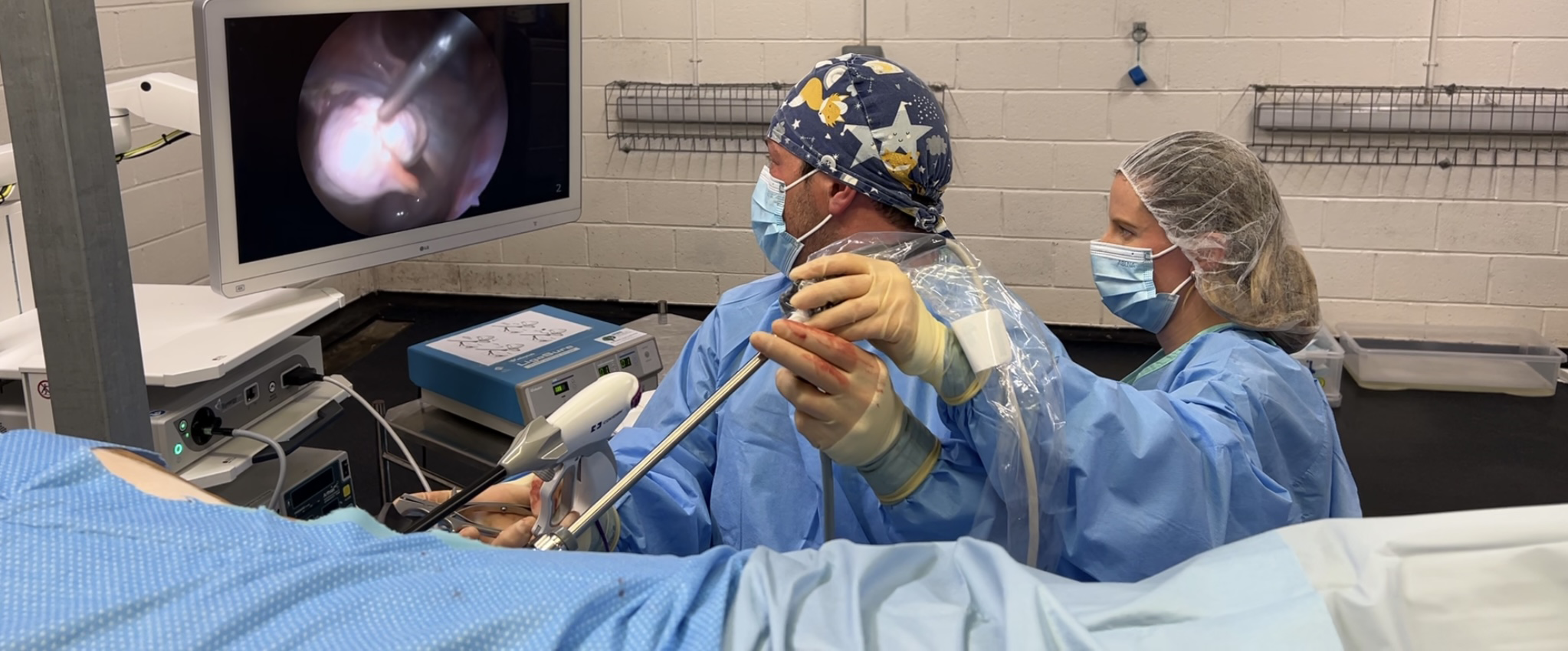What is gastric ulceration and why does it happen?
Equine Gastric Ulceration Syndrome (EGUS) is often perceived as affecting performance horses as a result of their intensive management and feeding regimes. In reality however, many horses are exposed to large quantities of concentrate feeding, little roughage, minimal or no turnout, long periods of starvation (due to weight management, competing regimes and when training) and an intense exercise programme. This means that ulcers commonly found in performance and pleasure horses and can cause signs of recurrent low grade colic, loss of appetite, weight loss, dullness, attitude changes and poor performance. We also see ulceration in ponies which live out 24/7.
Risk factors identified as a cause of gastric ulcers in horses:
- Low forage diet
- High concentrate diet
- Feeding straw
- Period of starvation
- Water not always being available
- Long periods of stabling
- Intense/increased exercise
- Regular/prolonged transport
- Management/housing changes
- Feeding rehydration sachets/pastes regularly
- Increased stress levels which can be due to travel
- Separation from companions
- Weaning is also a risk factor for both mares and foals
- Hospitalisation and any concurrent disease
- Use of anti-inflammatory medication has previously been implicated in the development of gastric ulceration but recent research suggests this is not the case when they are used at normal dosages
How are ulcers diagnosed?
The gold standard for diagnosis of gastric ulcers is made by gastroscopic examination.
Gastroscopy involves passing a narrow video-endoscope (fibre-optic camera) into the stomach under sedation, to visualise the stomach lining and assess any ulcers that may or may not be present. This process is minimally invasive, well tolerated by horses/ponies and is easily carried out at the Hospital or other suitable premises.
How are ulcers treated?
Peptizole (Omeprazole) paste given by mouth for 28 days following diagnosis is recommended as an initial treatment, reducing to a lower maintenance dose to control the recurrence of ulcers. It is imperative that this medication is not mixed with feed when administered and is given directly into the mouth. It is also advised to withhold feed 30 minutes either side of giving Peptizole – this maximises the effect of the drug.
Some horses may require additional treatment such antibiotics or mucosal protectants when ulceration is severe or does not heal as expected. Ulcers are curable but may require long-term treatment and do require long-term management. If you are having difficulty administering medication – please call the practice for advice.
Feeding and management for affected or at – risk horses
Feeding management is aimed at optimising gastro-intestinal function and minimising the deleterious effects of excess acid and its production.
A suggested feeding protocol for a horse with, or at risk of, gastric ulceration would include:
- Increasing pasture turnout
- Providing ad lib good quality hay or haylage and avoiding straw as the only forage available
- Continuous high quality forage diet available (eg:1.5kgs per 100kgs bodyweight)
- Concentrates should be fed in small quantities and increase number of feeds rather that increasing size of feed where possible (less than 0.5kgs per 100 kgs bodyweight per feed
- Oil supplementation (eg: 45 – 100 mls of corn, rapeseed or vegetable oil, twice daily in feed)
- Minimising feed deprivation – especially no longer that 6 hour intervals with no access to forage (this includes during transport and while competing etc)
- Giving a small fibre-based feed 30 minutes before exercise – this will not increase the likelihood of colic
- Free access to fresh clean water at all times including when turned out
- Avoid feeding hypertonic electrolyte replacement fluids/pastes regularly and if used offer with small quantities of feed
In horses which are prone to putting on weight easily it is still essential that feeding management is combined with weight management.
Dividing hay between multiple small-holed double or triple netted hay nets will slow feeding times down. Hay should also be soaked for 12 hours to reduce the nutrients.
Turnout is still recommended however, muzzling or strip-grazing may be required to limit grass intake.
Management will also help control ulcers and decrease the risk of recurrence. This includes:
- Reduce training/exercise intensity – not always possible especially in performance horses
- Increase pasture turnout to maximal time possible
- Avoiding stressful situations
- Minimising transportation and provide forage when transported
- Monitoring of attitude and signs that may indicate ulcers
- Performing gastroscopy at regular intervals to monitor ulcer severity and healing
- Medication may also be required to help minimise recurrence of gastric ulceration
Supplements
Many commercial supplements are available – often with poor evidence, therefore we do recommend that you discuss with your vet before purchasing additional supplements.
For example the use of probiotics.


